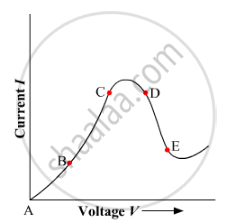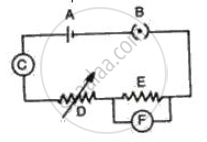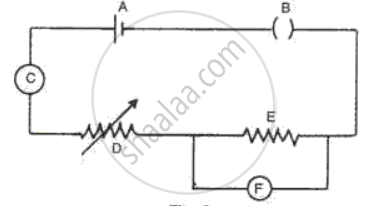Advertisements
Advertisements
Question
Four resistances of 16 ohms each are connected in parallel. Four such combinations are connected in series. What is the total resistance?
Solution
When four resistors of 16 Ω each are connected in parallel, the effective resistance of the combination can be obtained as:
`1/R=1/R_1+1/R_2+1/R_3+1/R_4`
or `1/R=1/16+1/16+1/16+1/16`
or `1/R=4/16`
or `1/R=1/4`
or `R=4`Ω
The effective resistance of combination is 4 Î.
When four such combinations are connected in series, the effective resistance becomes:
R = R1 + R2+ R3 + R4
R = 4 Î + 4 Î + 4 Î + 4 Î = 16 Ω
APPEARS IN
RELATED QUESTIONS
Graph showing the variation of current versus voltage for a material Ga As is shown in the figure. Identify the region of
(i) negative resistance
(ii) where Ohm's law is obeyed.

Is Ohm’s law universally applicable for all conducting elements? If not, give examples of elements which do not obey Ohm’s law.
A low voltage supply from which one needs high currents must have very low internal resistance. Why?
In a conductor 6.25 × `10^16` electrons flow from its end A to B in 2 s. Find the current flowing through the conductor (e = 1.6 × `10^-19` C)
Fig. represents the circuit used for the verification of ohm's law. Label the different parts from A and F. State the function of each.

Fig. represents the circuit used for the verification of Ohm's law. Label the parts from A to F. state the function of each.

Explain the equivalent resistance of a series resistor network.
The variable resistance is called ____________.
Ohm's law deals with the relationship between ______
